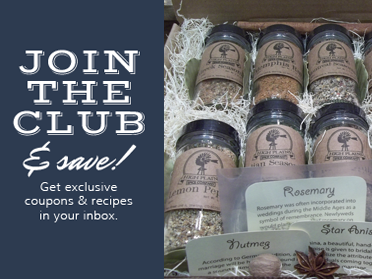Move over Britain! The United States outdrank this tea loving nation by 23.8 billion servings of tea in 2017 according to TeaUSA (2017) and the UK Tea and Infusions Association (2018). There’s a reason this beverage, whether hot or cold, has caught on. Tea is both delicious and nutritious as it “is a natural source of polyphenols and flavonoids which have antioxidant activity” (UK Tea & Infusions Association, 2018). Also according to the UK Tea & Infusions Association, tea contains half the amount of caffeine that coffee does so for those of us who dislike the side effects of too much caffeine, tea still provides a viable “pick me up” without the jitters.
Benefits aside, there are an astounding array of options of teas available to us. The four main types of tea are black tea, oolong tea, green tea, and white tea, all of which originate from the same plant, Camellia Sinensis. Specific processing techniques are responsible for the differences in flavor between these four varieties. Tea is usually picked by hand twice a year, once in the early spring and once in summer. Immediately after it is picked, oxidation begins to occur (oxidation is the process that takes place when oxygen molecules come in contact with any type of substance). It is this oxidation process that leads to the different types of tea. Let’s take a closer look at these 4 main tea types as well as herbal teas.
 Black Tea (China) is the most processed of the four types. Picked tea leaves are immediately transferred to a factory where they are withered to reduce moisture. Next, the leaves are rolled to release the rest of their moisture. After this, the leaves are spread out in a cool, dark place to allow the oxidation process to work its magic. The leaves begin this stage green, but as oxidation takes place they turn a copper brown color. Finally, the leaves are dried with hot air, and their color changes from copper to the more recognizable black. Black tea is known as “red tea” in China (for the color of its infused cup). It is hearty and full-flavored, with an inherent sweetness and underlying malty notes.
Black Tea (China) is the most processed of the four types. Picked tea leaves are immediately transferred to a factory where they are withered to reduce moisture. Next, the leaves are rolled to release the rest of their moisture. After this, the leaves are spread out in a cool, dark place to allow the oxidation process to work its magic. The leaves begin this stage green, but as oxidation takes place they turn a copper brown color. Finally, the leaves are dried with hot air, and their color changes from copper to the more recognizable black. Black tea is known as “red tea” in China (for the color of its infused cup). It is hearty and full-flavored, with an inherent sweetness and underlying malty notes.
 Green Tea is not only enjoyed as a hot beverage but is also packed with nutrients. According to Healthline (2018), “Green tea is about 30 percent polyphenols by weight, including large amounts of a catechin called EGCG. Catechins are natural antioxidants that help prevent cell damage and provide other benefits.” With a pale golden green color and soft taste, this tea produces a pleasant and alluring cup!
Green Tea is not only enjoyed as a hot beverage but is also packed with nutrients. According to Healthline (2018), “Green tea is about 30 percent polyphenols by weight, including large amounts of a catechin called EGCG. Catechins are natural antioxidants that help prevent cell damage and provide other benefits.” With a pale golden green color and soft taste, this tea produces a pleasant and alluring cup!
 White Tea is the least processed of all the teas. Named for the silver fuzz on the bud when the leaves are picked, white tea is often described as light, fresh, and sweet. It is also rich in antioxidants.
White Tea is the least processed of all the teas. Named for the silver fuzz on the bud when the leaves are picked, white tea is often described as light, fresh, and sweet. It is also rich in antioxidants.
 Herbal Teas are also commonly referred to as tisane and are made from a combination of herbs and spices. Many are caffeine free. Chia tea (black tea, milk, sweetener, and spices), chamomile tea (chamomile and other flavorful ingredients), and yogi tea (cinnamon, cardamom, ginger, black pepper) are all examples of herbal teas.
Herbal Teas are also commonly referred to as tisane and are made from a combination of herbs and spices. Many are caffeine free. Chia tea (black tea, milk, sweetener, and spices), chamomile tea (chamomile and other flavorful ingredients), and yogi tea (cinnamon, cardamom, ginger, black pepper) are all examples of herbal teas.
 Oolong Tea undergoes the same process as black tea, however it is only partially oxidized, and never reaches the same stage as black tea. As far as flavor goes, Oolong tea sits in the middle ground, combing the robust flavors of black teas with the lighter tastes of green teas.
Oolong Tea undergoes the same process as black tea, however it is only partially oxidized, and never reaches the same stage as black tea. As far as flavor goes, Oolong tea sits in the middle ground, combing the robust flavors of black teas with the lighter tastes of green teas.
For even more information about types of tea and their uses (including a few recipes) check out this useful guide
Be sure to check out our blog post on How To Steep Loose Leaf Tea next to get the most out of your loose leaf teas!
References:
Healthline. (2018). 10 Proven Benefits of Green Tea.
Tea Association of the U.S.A. Inc. (2017). Tea Fact Sheet.
UK Tea & Infusions Association. (2018). Tea Glossary and FAQ’s.






Reader Interactions